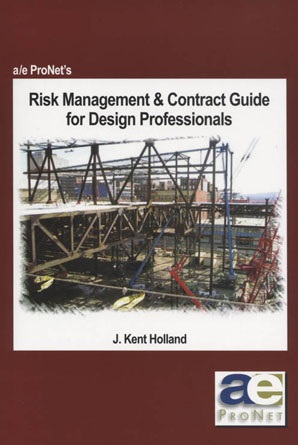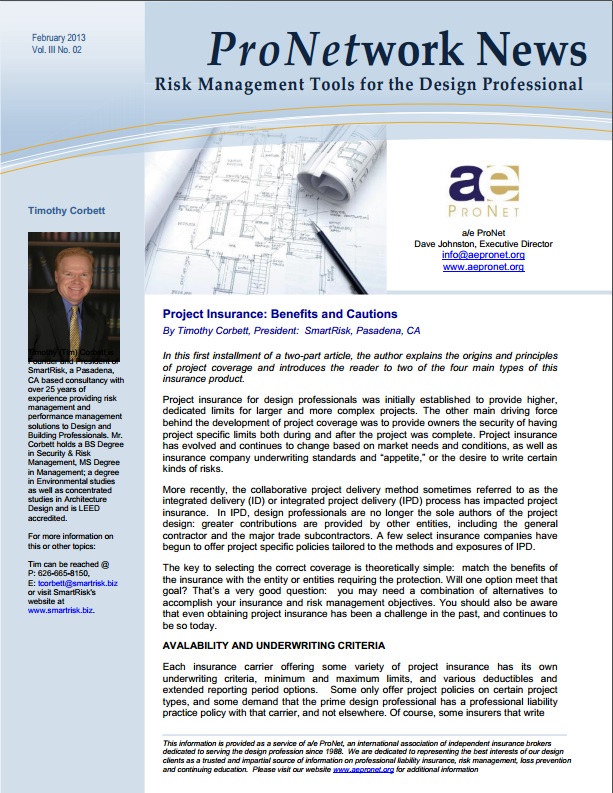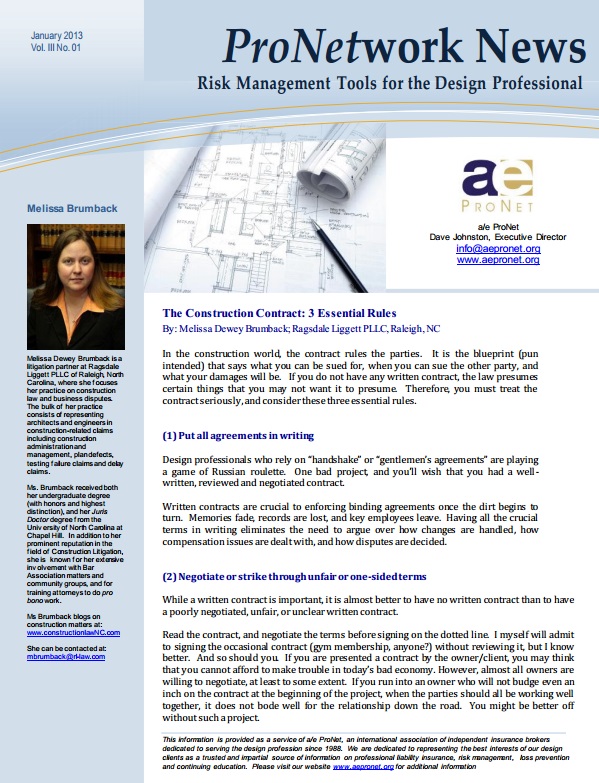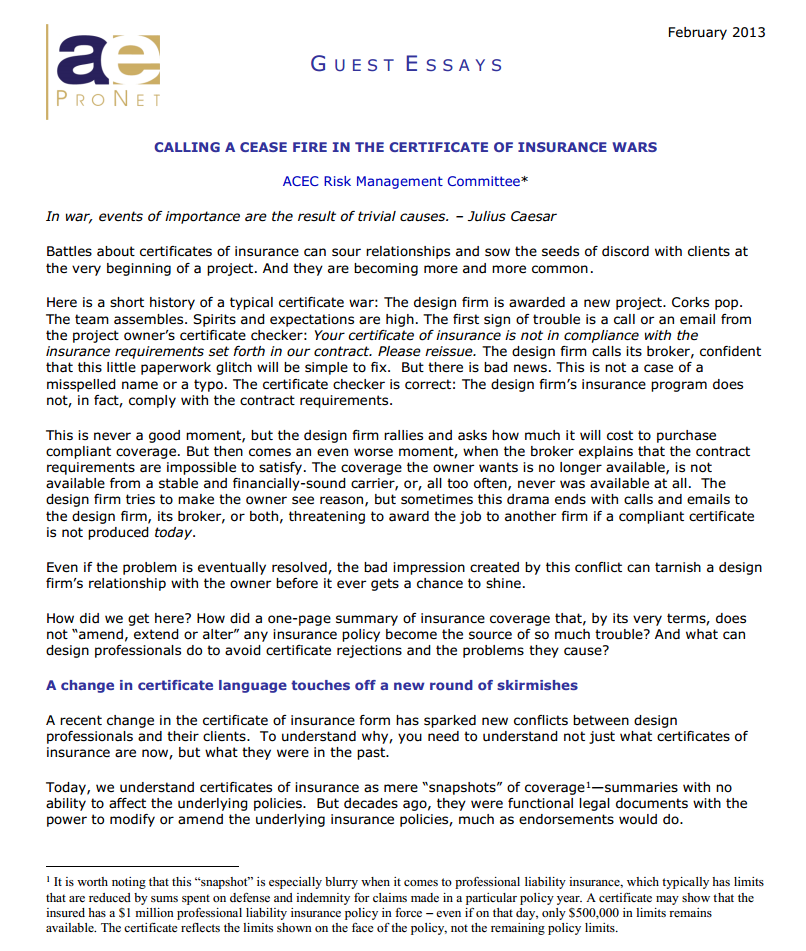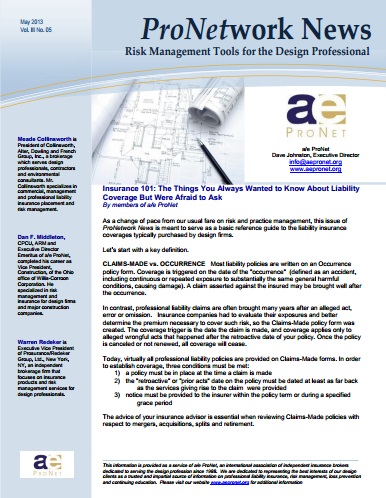 This issue of ProNetwork News is meant to serve as a basic reference guide to the liability insurance coverages typically purchased by design firms.
This issue of ProNetwork News is meant to serve as a basic reference guide to the liability insurance coverages typically purchased by design firms.
Let’s start with a key definition.
CLAIMS-MADE vs. OCCURRENCE
Most liability policies are written on an Occurrence policy form. Coverage is triggered on the date of the “occurrence” (defined as an accident, including continuous or repeated exposure to substantially the same general harmful conditions, causing damage). A claim asserted against the insured may be brought well after the occurrence.
In contrast, professional liability claims are often brought many years after an alleged act, error or omission. Insurance companies had to evaluate their exposures and better determine the premium necessary to cover such risk, so the Claims-Made policy form was created. The coverage trigger is the date the claim is made, and coverage applies only to alleged wrongful acts that happened after the retroactive date of your policy. Once the policy is canceled or not renewed, all coverage will cease.
Today, virtually all professional liability policies are provided on Claims-Made forms. In order to establish coverage, three conditions must be met:
- a policy must be in place at the time a claim is made
- the “retroactive” or “prior acts” date on the policy must be dated at least as far back as the services giving rise to the claim were provided
- notice must be provided to the insurer within the policy term or during a specified grace period
The advice of your insurance advisor is essential when reviewing Claims-Made policies with respect to mergers, acquisitions, splits and retirement.
This has been an excerpt of the May 2013 issue of ProNetwork News. The newsletter goes on to deal with all types of liability coverage, including Professional Liability Insurance, Commercial General Liability Insurance, Owners and Contractors Protective Liability Insurance, Workers’ Compensation and Employers Liability Insurance, Umbrella Liability Insurance, Employment Practices Liability Insurance, Directors and Officers Liability Insurance, and many more! Download the full PDF version of the newsletter here. Continue reading “Insurance 101: The Things You Always Wanted to Know About Liability Coverage But Were Afraid to Ask”

